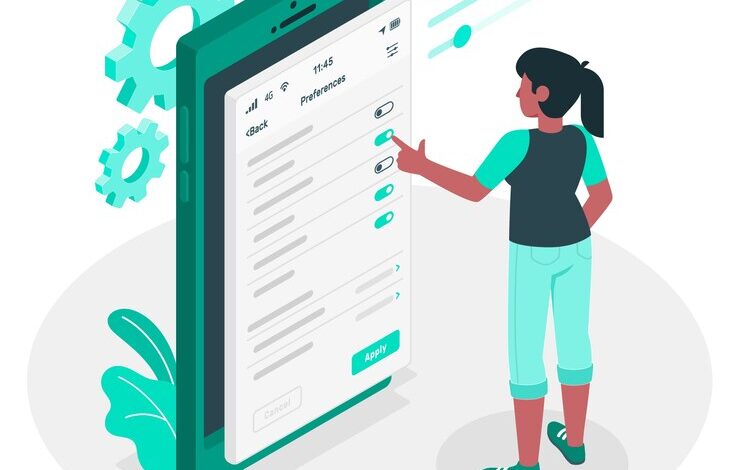Mastering rtask for Improved Productivity and Work-Life Balance
Mastering rtask for Improved Productivity and Work-Life Balance

Navigating the fast-changing world of work can be overwhelming, with endless tasks competing for attention. This is where rtask comes into play—a concept designed to streamline workflows, boost productivity, and provide the much-needed flexibility that modern employees and businesses crave. If you’re wondering how to integrate rtask into your daily routine or just curious about what it entails, this guide has you covered.
From understanding its benefits to learning how to implement it practically, we’ll explore how rtask is shaping today’s dynamic work environments and how it’s poised to evolve in the future.
By the end of this post, you’ll be equipped with actionable steps to incorporate rtask into your workflow for maximum impact—and enjoy a balanced, productive work life.
What is rtask and Why is it Relevant?
At its core, rtask refers to a structured approach to organizing tasks by importance, timelines, and your personal or team goals. It combines advanced task management techniques with tools that simplify workflows, ensuring that every minute of your day is purposefully spent.
The Importance of rtask in Today’s World
Gone are the days of static 9-to-5s; businesses today operate in dynamic environments driven by technology, remote work, and rapidly changing demands. This requires individuals and teams to adopt highly adaptive methods of working to stay on top of their game. rtask fulfills this exact need, offering a strategic framework for handling tasks across personal schedules and professional timelines.
Its relevance lies in its ability to align personal productivity with organizational objectives—whether you’re a solo freelancer juggling multiple projects or part of a corporate team striving to meet deadlines.
Key Benefits of rtask for Individuals, Teams, and Businesses
One of the standout features of rtask is that it benefits everyone—from individual workers managing their to-do lists to businesses looking to foster stronger collaboration and efficiency. Here are some of the major advantages:
- Enhanced Productivity: Stay focused on high-priority tasks by eliminating distractions and time leaks.
- Better Time Management: Break large goals into smaller, tangible steps, reducing overwhelm and improving time utilization.
- Improved Work-Life Balance: Structure your day to accomplish professional objectives without it bleeding into personal time.
- Stronger Collaboration: Clearly assign roles, responsibilities, and deadlines to minimize confusion and maximize team efficiency.
- Transparency: Use shared tracking tools to keep everyone on the same page, ensuring progress is visible to all stakeholders.
- Flexibility: Quickly adapt team schedules or priorities as demands change, without derailing overall goals.
- Streamlined Operations: Reduce bottlenecks within processes by ensuring tasks are aligned and completed on time.
- Scalability: Effective task management creates room for growth without additional strain on resources.
- Data-Driven Insights: Many rtask tools offer analytics, helping organizations make informed decisions based on employee performance and task execution.
How to Implement rtask Effectively

Integrating rtask into your routine doesn’t have to be complicated. Follow this step-by-step guide to get started:
1. Define Your Objectives
Ask yourself or your team what you want to achieve within a given timeline. Are you aiming to complete a specific project? Improve your day-to-day efficiency? Setting clear goals is the first step.
2. Prioritize Tasks
Use a prioritization method like the Eisenhower Matrix (urgent vs. non-urgent tasks) to identify what tasks need immediate attention versus what can wait. This gives you clarity and ensures you’re tackling high-impact work first.
3. Select the Right Tools
Many modern tools are tailored for rtask. Popular options include:
- Trello: A visual organizer with boards and lists for tracking every stage of a project.
- Asana: Best for teams, with features to assign tasks and set deadlines.
- Notion: Ideal for personal use, offering a mix of note-taking, database management, and task organization.
Choose a tool that not only aligns with your workflow but also enhances it.
4. Set Realistic Deadlines
Underestimating how long tasks will take is a common mistake. Assign realistic deadlines to create accountability while ensuring that the workload remains manageable.
5. Evaluate and Adjust
Task management isn’t static—it requires constant evaluation. Use your chosen tools or calendar to review what’s working and refine what isn’t. This iterative approach helps you stay on top of a dynamic to-do list.
6. Celebrate Success
Acknowledge both small milestones and major achievements—this boosts motivation and keeps you aligned with your objectives.
The Future of rtask in Changing Workplaces
The concept of rtask is still evolving, adapting to meet changing workplace demands and technological advancements. Here’s what we see on the horizon:
AI-Driven Customization
AI tools, like machine learning algorithms, are starting to play a major role in task management. Imagine platforms that learn your work habits over time and provide personalized recommendations for structuring your day. This is already becoming a reality.
Greater Integration with Remote Work
The rise of remote work is accelerating the adoption of rtask tools specifically designed for dispersed teams.
Focus on Employee Wellbeing
Companies are beginning to realize how task management affects employee mental health. Expect future rtask tools to include wellness integrations, such as reminders for breaks, mood tracking, and mindfulness exercises.
Take Charge of Your Tasks Today
Adopting rtask is more than just a productivity hack—it’s a way to regain control over your time while achieving your professional and personal objectives. From its flexibility to its ability to enhance both individual and team workflows, rtask is quickly becoming a must-have practice for any modern workplace.
Why wait? Start integrating rtask into your workflow today using the tools and techniques shared here. And don’t forget to share your experiences in the comments or on social media. We’d love to hear how rtask is making a difference in your daily life!



